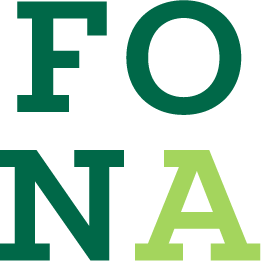VISIT
TEMPORARY SPRING TRAFFIC PLAN
The R Street gate will be closed to all personnel and vehicular traffic on Wednesday, April 17th beginning at 8:00 am. The closure is due to the installation of new gates and should last approximately 4 to 5 hours.
Beginning Wednesday, March 27th through mid-May, the Arboretum will implement a temporary traffic plan that impacts traffic flow and parking throughout the grounds. We urge visitors to plan their weekend visit as early in the day as possible or visit on a weekday to avoid crowds.
- One-Way Traffic Flow: Vehicles will only be allowed to travel one way down Hickey Lane and Eagle Nest Road, beginning at the intersection of Hickey Lane and Valley Road and continuing to the intersection of Eagle Nest and Azalea Roads. Azalea Road will also become a one way lane. All other traffic patterns will remain unchanged.
- Pedestrian Walkway: A pedestrian pathway will run adjacent to vehicle traffic on Hickey Lane, beginning at the intersection of Hickey Lane and Valley Road and continuing to the R Street Entrance.
- On-Street Parking: Vehicles will be allowed to park on one side of the road ONLY in designated areas along Eagle Nest Road, Azalea Road, and Valley Road. Signs will designate where parking is allowed.
Pedestrians and bicyclists are not subject to traffic restrictions, but please take special care when traveling around the one-way loop that is open to traffic.
The adjacent map illustrates the impact of this traffic plan on the grounds. Both the R Street and New York Avenue Entrances will operate as normal. Please drive carefully through the R Street Neighborhood and be respectful of our neighbors when accessing the R Street Entrance. Thank you for driving safely through the National Arboretum this spring.
WHAT TO SEE
The U.S. National Arboretum is a research institution, public garden, and green oasis of 451-acres that sits on the shores of the Anacostia River in Washington, DC. Annually, over 650,000 visitors enjoy connecting with nature, plants, and science. Its science has resulted in important plant introductions resistant to disease and pests that benefit our nation’s plant nursery landscape.
Established in 1927, the Arboretum is administered by the Agricultural Research Service (ARS) within the U.S. Department of Agriculture.
Arboretum Collections
In addition to the collections described below, the Arboretum contains striking collections of boxwoods, daffodils, daylilies, dogwoods, hollies, lilacs, magnolias, and maples.
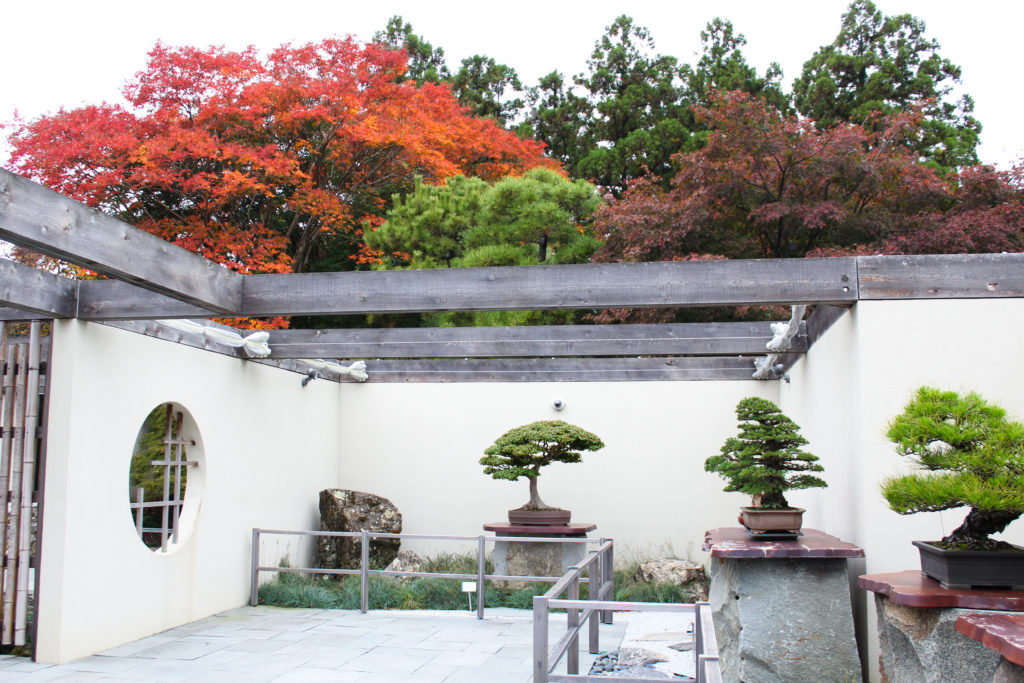
National Bonsai & Penjing Museum
This tribute to the history and beauty of bonsai is home of hundreds of bonsai trees, some of which are centuries old.

Introduction Garden
This garden showcases some of the many cultivars introduced by the National Arboretum and contains a koi pond that is a long-time favorite with kids.
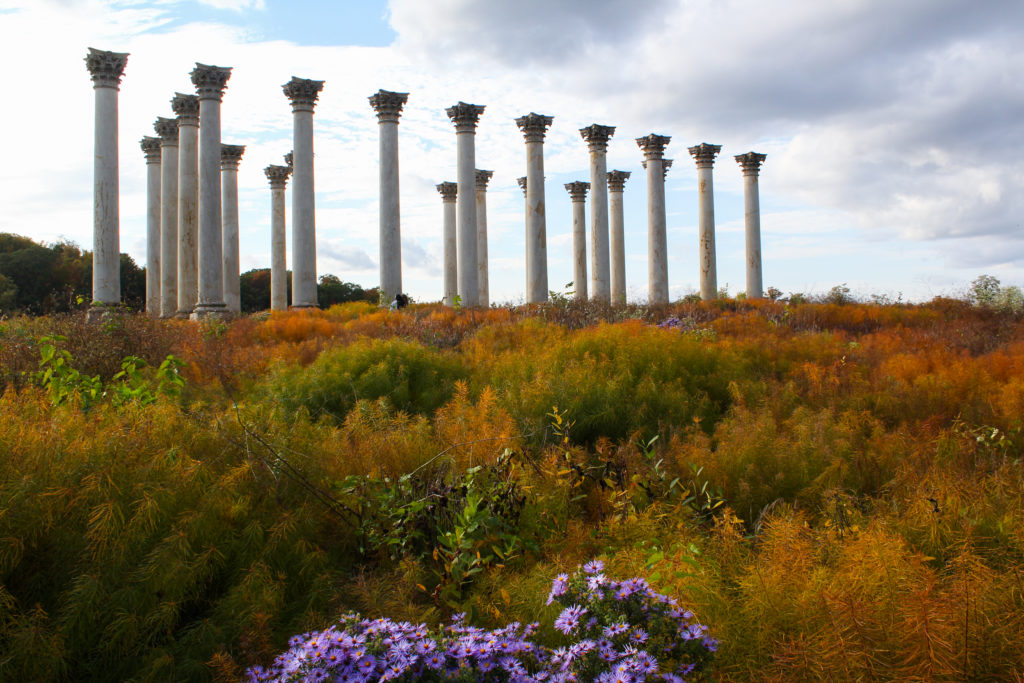
Capitol Columns
Originally part of the East Portico of the Capitol Building, these columns now create a captivating space overlooking a beautiful meadow.

National Herb Garden
The largest designed herb garden in the United States includes a traditional knot garden, a rose garden, and 10 beds organized by themes.
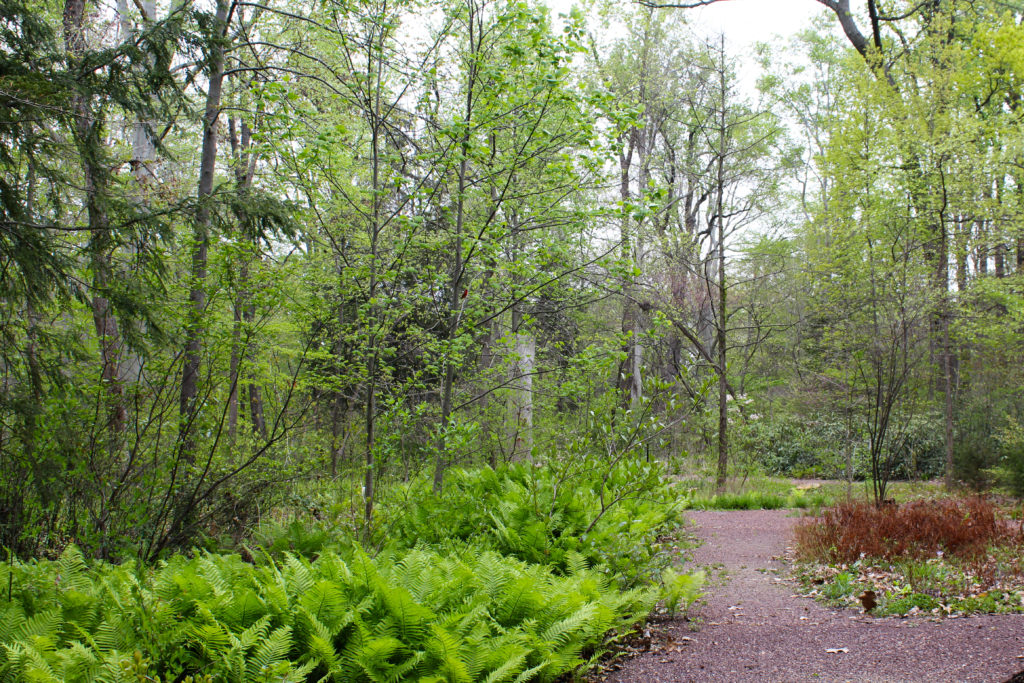
Fern Valley
Visitors can follow shaded paths through a woodland area filled with native plants from the eastern United States.
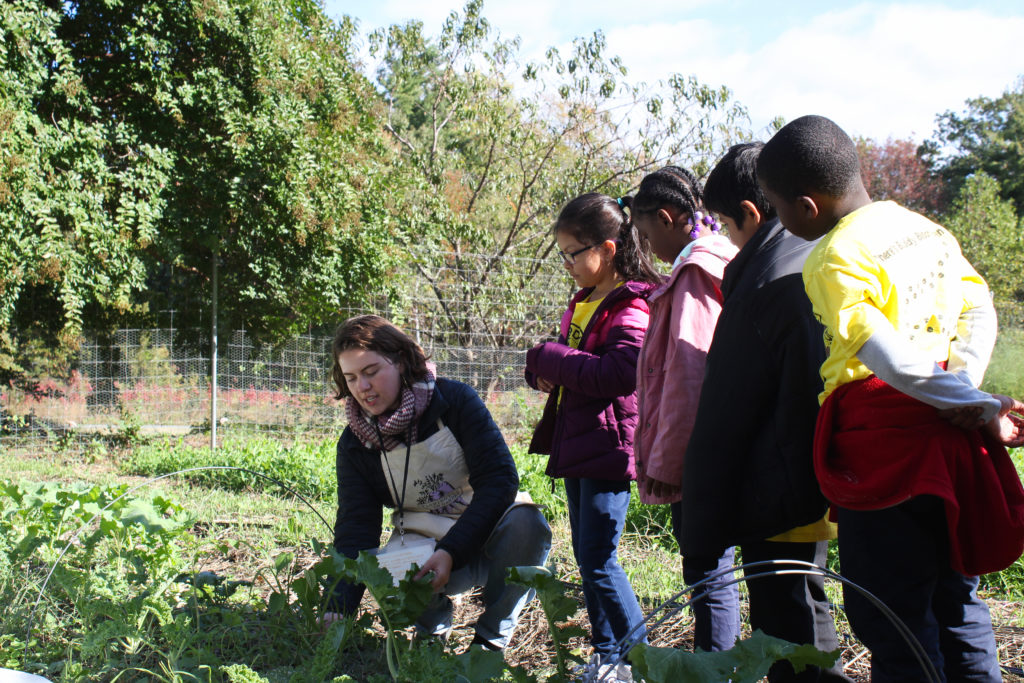
Washington Youth Garden
Our very own children and family-friendly garden grows a variety of food crops. Visit the WYG page for more information.
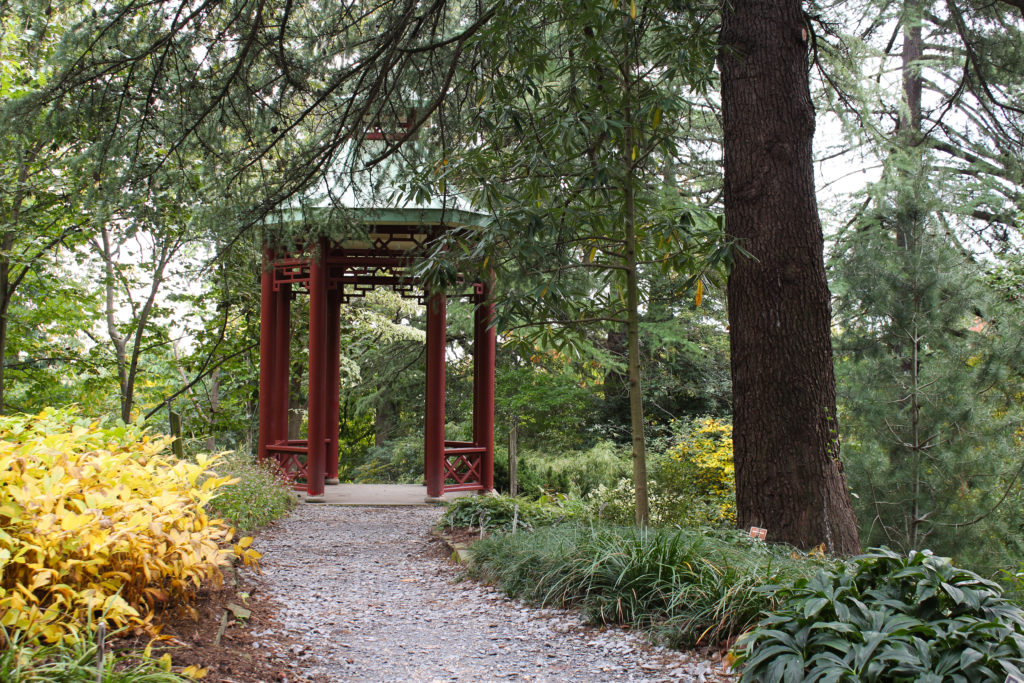
Asian Collections
These collections are home to a winter-blooming Camellia Collection and plants from China, Japan and Korea.
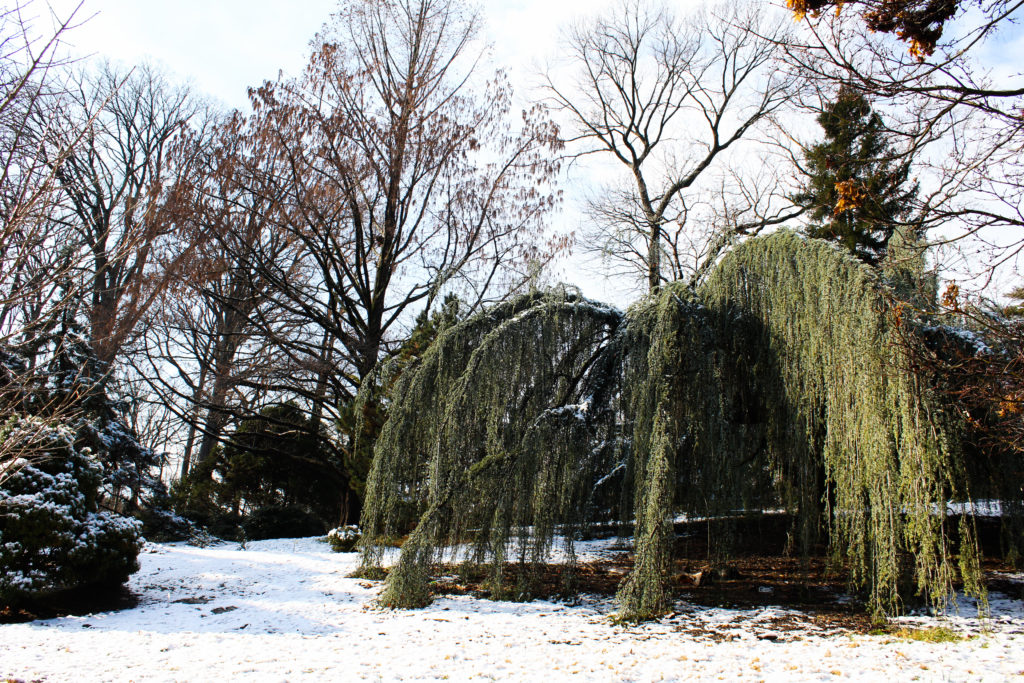
Gotelli Conifer Collection
A wide variety of dwarf and slow-growing conifers are interspersed with 31 of the Arboretum’s crapemyrtle cultivars.
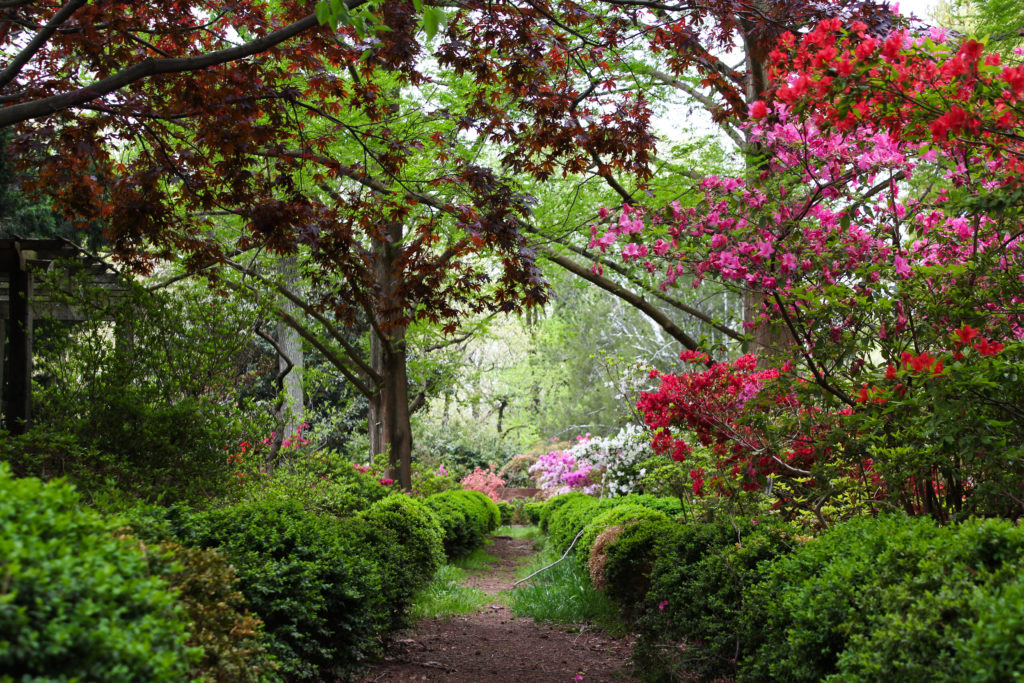
Azalea Collections
With thousands of azalea plants, these collections are the reason the grounds were first opened to the public.
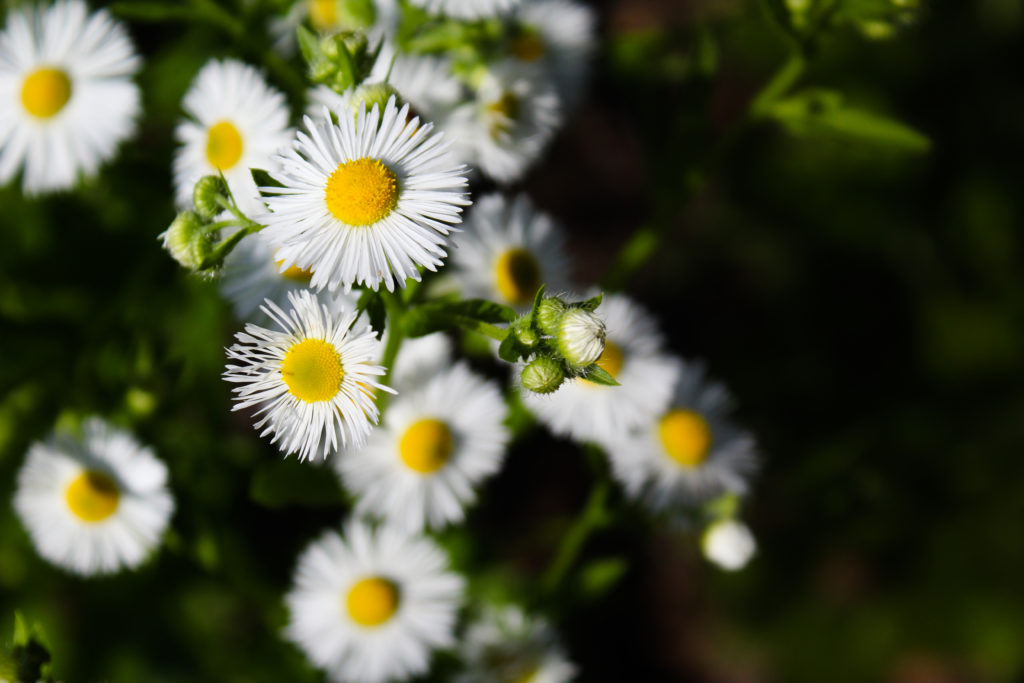
Friendship Garden
Surrounding Arbor House, where our office is located, this garden is low-maintenance and environmentally friendly.
LINKS
Explore the National Arboretum’s website
PLAN YOUR VISIT
Photography
Permit Required
Please note that the following may require a USNA photography permit: special occasion photography; individual and group portrait photography; commercial and promotional photography; and photography that includes subjects, props, models or anything more than the natural and cultural resources of the National Arboretum.
Address
R Street Entrance + GPS
2400 R St NE
Washington, DC 20002
This gate is closed to vehicles from 2 PM to close on Monday through Friday. Pedestrians and bicyclists may use this gate at any time the grounds are open.
New York Avenue Entrance + Mailing
3501 New York Avenue NE
Washington, DC 20002
Days & Hours
Grounds
Monday – Sunday: 8 AM – 5 PM (only closed on December 25th)
Visitor Center
Monday – Sunday: 8 AM – 4:30 PM (closed on all federal holidays from November through February)
National Bonsai & Penjing Museum
Monday – Sunday: 10 AM – 4 PM (closed on all federal holidays from November through February)
FONA Office
Many of our staff work remotely but respond readily to calls and emails.
Accessibility
Use the Arboretum’s Gardens & Collections webpage for information about each collection’s accessibility. The information will be found in the webpage for each collection. You may want to start with the Capitol Columns and National Herb Garden pages.
Rules
Please follow these rules and guidelines during your visit:
Washington Youth Garden
Visit the Washington Youth Garden, a family-friendly space where we teach garden-based science to children and their families.
Parking
Admission and parking are free at the National Arboretum! Please park in the multiple marked lots available throughout the Arboretum — please refrain from parking on the side of the road and in the grass.
Public Transportation
Bus & Rail
While there are no rail lines that take you directly to the Arboretum, there are bus stops nearby to link you to the Arboretum. Use the Metro’s Trip Planner to find your best route.
Train
Visiting from out of town? The National Arboretum is located near Union Station, DC’s central hub for MARC and Amtrak trains. From there, take a ride share or bus to the Arboretum.
Bike
Bring your own bike or rent one! Capital Bikeshare has a bike hub outside the R Street Entrance for visitors to rent bikes from and cruise around the Arboretum.
Ride Share
Need a ride? Meet your rideshare driver at the R Street Entrance for easiest access into and out of the Arboretum.
Amenities
Restrooms & Water Fountains
Arbor House
M-Street Gate Parking Lot (open during warmer months)
Asia Valley Collections (open during warmer months)
Visitor Center
Vending Machines
Arbor House
Visitor Center
Picnicking
Grove of State Trees
Google Map
Click on “View larger map” to open in Google Maps.
MOBILE APPS
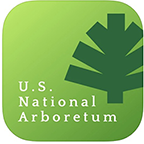
US National Arboretum
The National Arboretum’s official app includes a map of the grounds, information about the collections and plants, and self-guided tours.
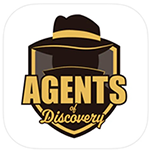
Agents of Discovery
Connect to nature and your community through augmented reality experiences in public spaces and use sensory skills to investigate the plants in the National Arboretum! Great for families.

iNaturalist
Identify plants, fungi, and wildlife with image recognition technology connected to databases by the National Geographic Society and the California Academy of Sciences.
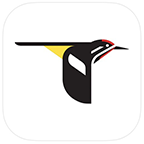
Merlin Bird ID
Identify any bird you see with either a picture or answers to 5 simple questions. Learn everything about its diet, habitat, and songs.

